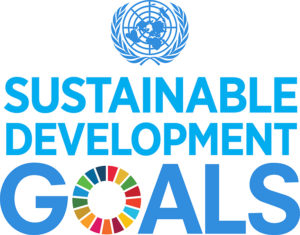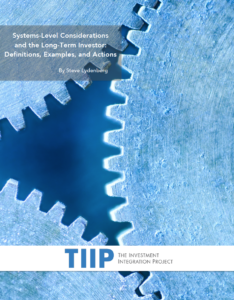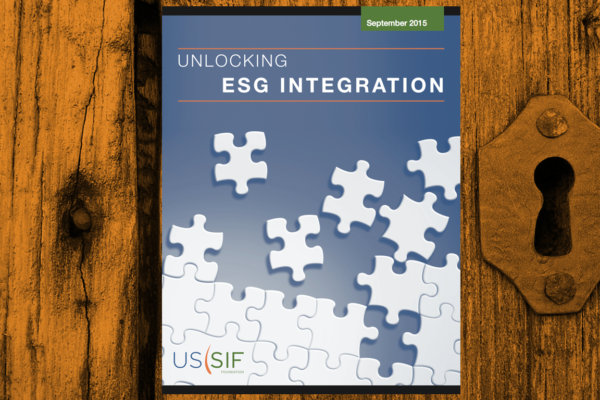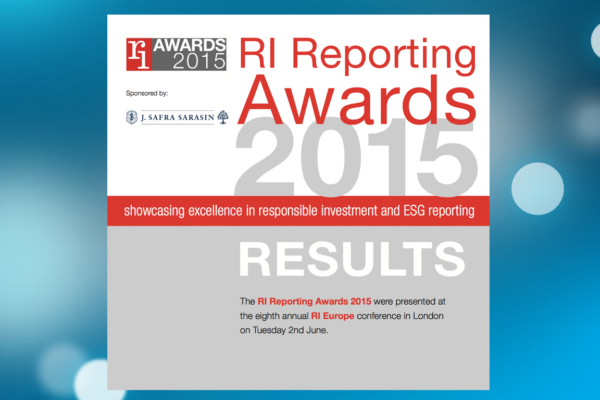Note: This op-ed was originally published in Responsible Investor on March 14, 2017 and has been reproduced here in its entirety.
—
 In the fall of 2016, Amit Bouri, the CEO of The Global Impact Investing Network (GIIN), called on investors everywhere to commit capital to impact investing efforts aimed at meeting the UN Sustainable Development Goals (SDGs). The SDGs are a “universal call to action to end poverty, protect the planet and ensure that all people enjoy peace and prosperity.”
In the fall of 2016, Amit Bouri, the CEO of The Global Impact Investing Network (GIIN), called on investors everywhere to commit capital to impact investing efforts aimed at meeting the UN Sustainable Development Goals (SDGs). The SDGs are a “universal call to action to end poverty, protect the planet and ensure that all people enjoy peace and prosperity.”
In emphasizing the urgency of the challenge, Bouri wrote “that every investor not already involved make at least one SDG-focused impact investment—and [to] get started…immediately.” Thanks to efforts by the GIIN and others, a number of investors, including Aviva, PGGM and Sonen Capital, as well as the UNEP Financial Initiative and the Cambridge Institute for Sustainability Leadership, have begun to explore ways to align investment activities with them.
Although presented as goals, the SDGs have the characteristics of what we at The Investment Integration Project (TIIP) refer to as “systems-level issues.” By “systems” we mean the vast set of what are essentially common-pooled environmental and societal resources upon which civilizations have depended for thousands of years and upon which investors have been so reliant in creating long-term wealth.
For institutional investors concerned about the ongoing health of these systems (which TIIP categorizes as environmental, societal, and financial) and/or motivated by the SDGs, a major decision must be made: which issue(s) within which system(s) should be considered?
 In our new report, “Systems-level Considerations and the Long-term Investor: Definitions, Examples, and Actions”, we provide asset owners and managers with four guidelines for selecting issues of focus and six examples of how investors might use this framework in practice.
In our new report, “Systems-level Considerations and the Long-term Investor: Definitions, Examples, and Actions”, we provide asset owners and managers with four guidelines for selecting issues of focus and six examples of how investors might use this framework in practice.
We release this report because, as the world becomes more interconnected, we see the need for investors to contend, more than ever before, with risk outside their immediate portfolios. In the most obvious example, the 2008 financial crisis, few investors understood how mortgage defaults in one country could, through collateralized debt obligations, wreak such devastating effects on the global financial system. Similarly, in the early 2010s speculators in the global commodities markets for staples such as wheat and corn, along with oil and fertilizer, helped drive the price of basic foods such as wheat and rice to levels so unsustainable for the world’s poor that they provoked food riots and arguably contributed to the social unrest that ignited the Arab Spring with its subsequent failures of states and its regional geopolitical instability. How will current systems-level issues like climate change, access to freshwater, millennial youth unemployment, mass migrations, and a continued lack of transparency in the financial markets play out? Are our global systems as they currently exist resilient enough to withstand shocks created when any one of these issues reaches a tipping point? Can investors withstand tumultuous market conditions?
The underlying message here is that systems-level issues have significant potential to undermine the performance of all investors. The guidelines in our report can serve institutional investors well as they contemplate which systems they may wish to focus on and the feedback loops between their portfolios and these systems. A clear focus on well-defined systems and a nuanced understanding of feedback loops will help investors play a part in promoting the resilience of the systems on which they depend and create a rising tide of opportunity for all investors.
As we note in our report, the characteristics that may be helpful to investors in determining those systems-level issues most relevant are: widely accepted as critical to the functioning of systems; broadly relevant to long-term investment returns; susceptible to substantive influence from investors; and likely to have a broad range of unpredictable implications and outcomes under varying levels of stress. For example, consider healthcare: the likes of United Nations and OECD, two global and widely-respected organizations, have agreed that healthcare is universally important. For investors, a healthy society is one that is stable and productive. In such an environment, investors can have a positive impact on access to healthcare through a variety of policies and practices. They can invest in specific companies or technologies that bring down the costs of healthcare products and services. They can invest in those marketing healthcare products and services to individuals and families at the bottom of the pyramid. In contrast, when societies are unhealthy and riddled with poverty, outcomes are less than optimal.
In sum, if investors embrace the idea that investment decision-making can be thought of as occurring simultaneously on two levels, that of the portfolio and that of systems, and manage risks and rewards at both levels appropriately, they contribute to long-term wealth creation and the responsible management of their portfolios. The more comprehensive investors’ understanding of systems-level preservation and enhancement, the greater their comprehension of how “doing the right thing” can encompass both prudent management of assets and the creation of rising tides of potential wealth creation that benefit investors, as well as society as a whole.
Steve Lydenberg is the Founder and CEO of TIIP, and a Partner at Domini Impact Investments. William Burckart is the President and COO of TIIP, and a visiting scholar at the Federal Reserve Bank of San Francisco. TIIP’s role is to catalyze, collaborate and create research that will make systems-level considerations simpler and easier for institutional investors.



